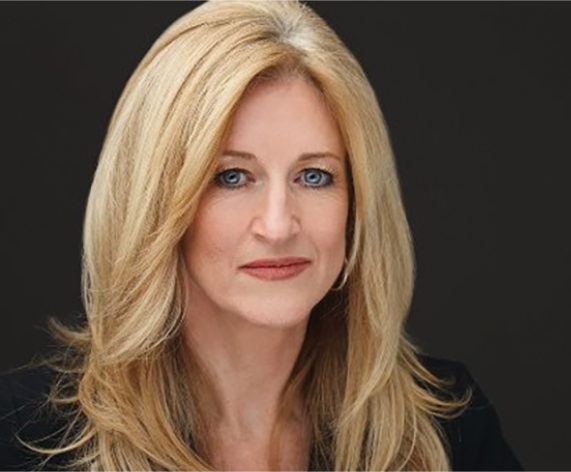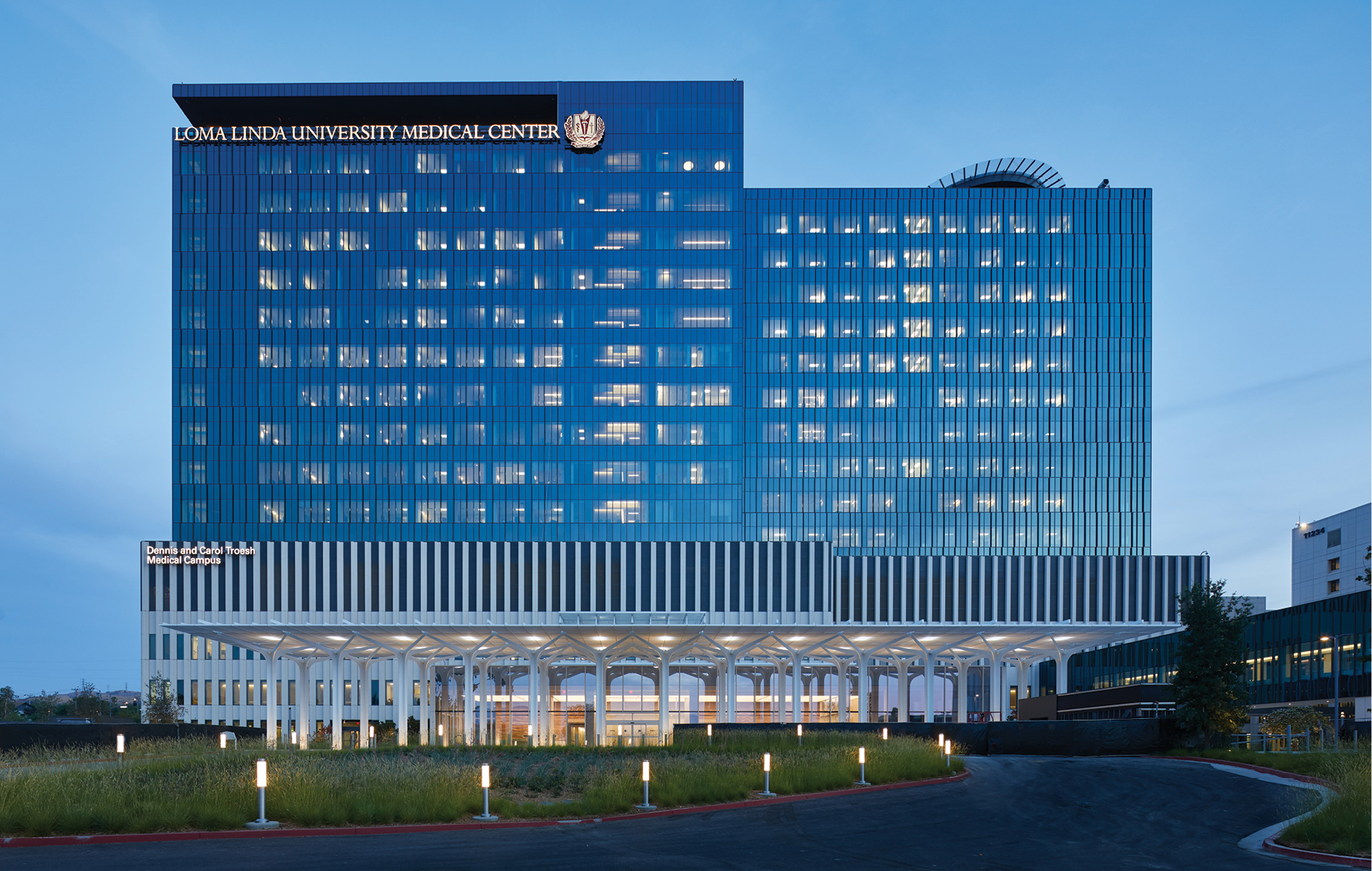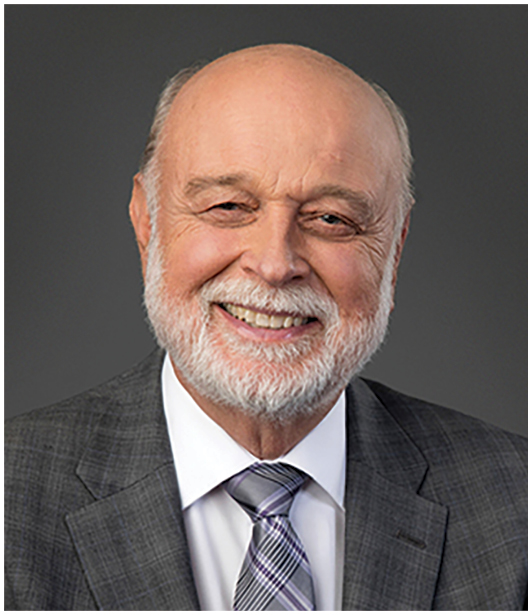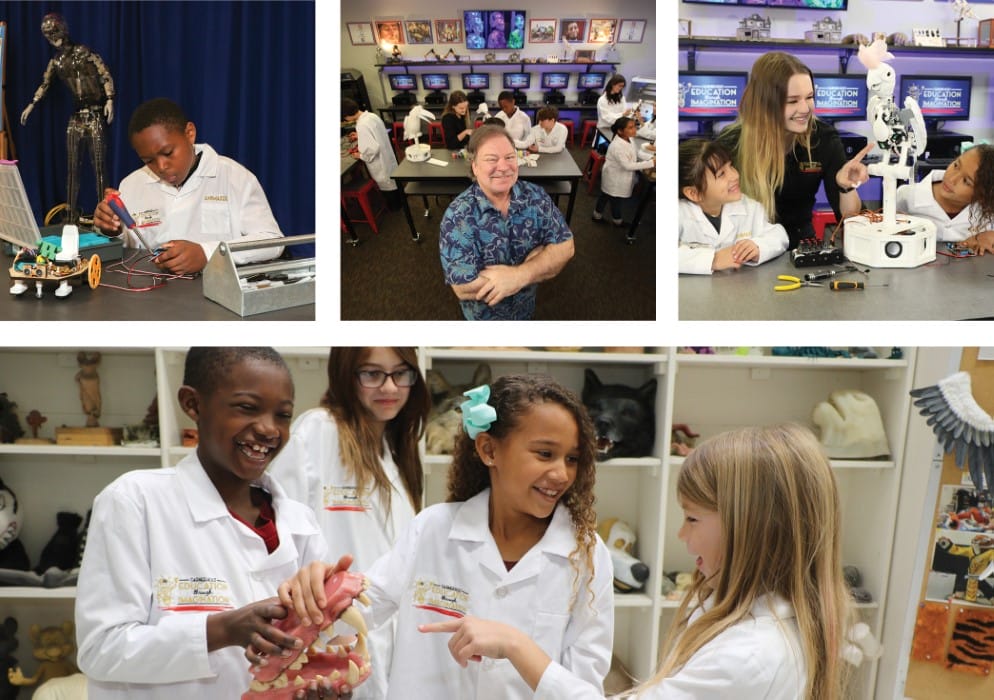Remember how you felt the first time you visited Disneyland or Walt Disney World as a child? Garner Holt does, and he has since made a lifetime out of designing and making most of the animatronic characters you see every time you enter the “Happiest Place on Earth.”
Now, he hopes to ignite more STEAM (science, technology, engineering, arts and math) learning in young people and ultimately launch the next generation of makers, artists, sculptors, creators, engineers and manufacturers. He’s doing it through a program he launched at his Garner Holt Productions headquarters in Redlands in San Bernardino County.
Located an hour from Anaheim’s Disneyland, GHP has been building lifelike characters for Disney for nearly half a century. From the Hall of Presidents to the Pirates of the Caribbean, Holt and his team of talented artists, sculptors, designers and builders bring the classic tales of Walt Disney to life for families worldwide. Now he’s teaching the next generation the skills needed to make a career out of their own imagination.
His program is called Garner Holt Education Through Imagination, an interactive, fun, hands-on learning experience that engages not just the minds of young people in creative design and manufacturing, but also their hearts. Kids love it so much that one father remarked that he’s jealous of his daughter every time he drops her off at GHP for the educational experience.
“The response to this program has been great,” Garner Holt says. “It is a whole educational initiative that we have developed for the region. We want to take it across the U.S. It is a concept that I developed based on our history. It is based on how I learned. I wanted to capture the excitement around robotics. All these kids are going to be working next to robotics in the workplace. They need to get used to that. That derives from animatronics. It is a lot of robotics with an artistic side. It is similar to the work we do every day at Garner Holt Productions.”
GHP has grown steadily from the day Holt started the company in his garage in the City of San Bernardino 45 years ago. After working for years out of a small facility in San Bernardino, GHP relocated and expanded in 2018 into newer space in nearby Redlands that now includes a 120,000-sq.-ft. manufacturing plant and headquarters and a 20,000-sq.-ft. educational building across the street. GHP considered other sites in San Bernardino, Riverside and Las Vegas before choosing Redlands.
“That is now four times the size of what we had back then,” says Holt. “Our headcount today is around 85. We are happy where we are here. This is a great region to be in. We want to find the best people.”
That is partly what motivated Holt to launch the educational program. “Two different things inspired me,” he says. “I never really finished high school. I tested out in my junior year. I never went to college. My favorite part of school was taking shop class. I took metal shop, wood shop, drafting and sculpting. Everything I know started there. But then all the shop classes went away. Many kids in high school today have never even picked up a tool. That’s why we launched the Garner Holt AniMakerspace. It teaches kids art and technology and introduces them to 30 different career paths. It engages kids with hands-on learning.”
The goals of Education Through Imagination are largely the same. “I want to inspire young people,” says Holt. “I want them to leave this place enamored with what we do. I want them to leave with a smile on their face, just like I did the first time I visited Disneyland. Just maybe, we could take the fun and excitement of what we do here and pass it on to the next generation.”
Sharing a Passion for Flight
All indications are that Holt’s program is working; and he is not alone in his passion to teach young people the fine art of technical creativity. Just down the road from GHP in the City of San Bernardino, Kim Benson and her team at the San Bernardino International Airport (SBD) are doing much the same.
Benson serves as administrator of the Unmanned Aircraft Systems (UAS) Center at the airport. The center is part of the Inland Valley Development Agency (IVDA), a regional group whose goal is to redevelop the area around what used to be Norton Air Force Base before it was closed in the 1990s and turned into an international airport.

“Almost every industry can use drones. We equip local workers to be able to use that skill in any field. This creates a pathway for people of all ages in all industries.”
— Kim Benson, Administrator, UAS Center at San Bernardino International Airport
About 10,000 jobs were lost when the base shut down. Since then, more than 15,000 new jobs have been created as San Bernardino International became one of the fastest-growing airports in the nation for air cargo.
“We are here to build up the drone industry,” says Benson. “Our job is to build innovation and attract companies in the UAS sector. We focus on workforce development in drone pilot training. We have an active internship program. We offer it to area schools and to Embry Riddle Aeronautical University in Prescott, Arizona. They are the top UAS school in the nation.”
Benson notes that logistics operators, which have flooded into the Inland Empire in record numbers in recent years, have a need for certified drone pilots who must pass rigorous tests administered by the Federal Aviation Administration. “We provide the training to help drone pilots pass that test and to give them the hands-on flight skills they need to become employable,” Benson says.
Benson adds that drone piloting can be a lucrative career path for young people. “Almost every industry can use drones,” she says. “We equip local workers to be able to use that skill in any field. This creates a pathway for people of all ages in all industries.”
The UAS Center has trained hundreds of drone pilots since opening its doors at SBD in July 2020. “We want to make sure they know how to fly safely,” says Benson. “For larger groups, we will go to the sites of the clients. We have also trained groups of students who have just graduated from high school.”
Public sector agencies are big users of drone pilot training, she adds. “Fire, police, SWAT, medical workers — we train them all. Also, drone companies can come to SBD to test and train on their own. We take a comprehensive approach to workforce development.”
The next horizon, she says, is autonomous drone technology. “I am talking to you while attending the Global Autonomous Systems Conference in Anchorage, Alaska, right now,” Benson says. “Being trained in automation is important too. The problem is that technology is outpacing regulation in this sector. With drones flying autonomously, just think what that means for regulatory bodies and our airspace.”
The UAS Center at SBD will be there to equip operators of autonomous drones and provide whatever training is needed, she adds. “Any company that uses drones in their operations would benefit from this. This is an important selling point for this region.”
Training Those Who Heal the Sick

Photos courtesy of Loma Linda University Health and Benjamin Benschneider

Laid out amidst the beautiful, rolling hills of Loma Linda in San Bernardino County is an institution born from a passion to heal the sick and train those who do it. At Loma Linda University Medical Center and Loma Linda University Children’s Hospital (LLUCH), it’s all in a day’s work.
Dr. Richard Hart, president of Loma Linda University Health (LLUH), oversees the operations of the organization’s eight schools and six hospitals. Having served at LLUH since 1972, this place has been more than his job; it has been his life’s calling.
Founded by Seventh-day Adventists, the academic medical center continues its faith-based mission by advancing medical therapies for cancer patients, including the many children who come for care. To learn more about how LLUH equips the healthcare workforce of San Bernardino County, we interviewed Dr. Hart.
You were recently ranked as one of the top children’s hospitals in the country by U.S. News & World Report. What sets Loma Linda apart as a best-in-class children’s hospital?
DR. HART: The breadth of services that we provide and the care we give people sets us apart. We have over 200 pediatric faculty on staff, and we work very hard on quality metrics. We have a system here called Whole Child Care that is used throughout our Inland Empire network.
LLUCH was awarded a $135 million grant — the single largest award that California Health Facilities Finance Authority has ever given. What is this money being used for?
DR. HART: We are adding pediatric care for cancer. This includes a new specialty outpatient tower and expanding our pediatric oncology services.
How important is continuing education and workforce development to the work you do at the university and the hospital?
DR. HART: Developing our faculty and staff is critically important. We produce graduates; and then we recruit them to work here. We are working to make many of our educational programs available to students so they can access them online. We offer staff education and development, and adult learning.
Have you expanded your campus recently? Do you plan to expand again?
DR. HART: The Dennis and Carol Troesh Medical Campus opened in August of 2021, which houses 320 beds in a new adult hospital and 84 beds in the new Children’s Hospital tower, an expansion of the existing pediatric hospital. We also have plans for a dedicated pediatric facility that will focus on specialty services, including innovative cancer therapy.
What do you like best about the workforce that you are able to draw from in the region?
DR. HART: We are fortunate to have an academic and health science center with our own training programs. We have pipeline programs for high school students to come in and learn about health professions. More than 1,000 students have gone through that now. We have enormous potential, and it is getting better.
What are some breakthroughs in medical science that have come about due to the work you do at Loma Linda?
DR. HART: One was the development of proton therapy in the 1990s at LLUH. We were the only proton therapy unit for a decade. The second was Baby Fae. She was the recipient of the first infant heart transplant in the world in 1994. Since then, we have done more infant heart transplants than any other place in the world — over 500 now. A third is theranostics. It uses an ion to image cancer cells at the cellular level in the body. We then use that to treat cancer at the cellular level.
What else do you want people to know about LLUH?
DR. HART: We are a faith-based institution. We take compassion and care to a whole new level. Our motto is to make man whole. We are also one of the few teaching hospitals that is faith-based. We are part of the Seventh-day Adventist church. We have over 18,000 employees, 4,400 students and over 1,000 doctors; and we have been here for over 112 years.
This Investment Profile was prepared under the auspices of San Bernardino County. For more information, contact the County’s Economic Development Department at 909-387-4700. On the web, go to www.SelectSBCounty.com.


